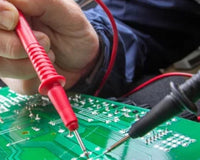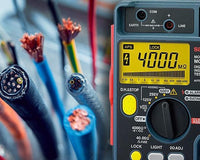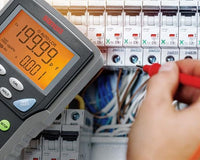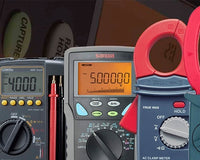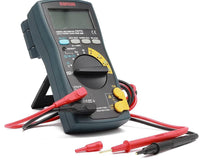What's a Clamp Meter?
A clamp meter is an instrument that reads high current values that can't be measured using a standard multimeter. They are much more accurate when measuring large values of current and provide a safe way to take measurements.
Things to Consider
There are a number of factors that come into play in choosing the right digital clamp meter, including:
Measuring RangeClamp meters have a minimum current measuring range of 100 Amps and can go all the way up to 3000 Amps depending on the type of clamp meter. This feature is very important when it comes to the type of application it’s being used for.
Safety Installation Category RatingMake sure to choose the instrument that complies with the appropriate category rating to make sure the device can withstand the power conditions required.
Rated test instruments cover the local level of circuits for fixed or non-fixed power devices. This includes most lighting equipment, appliances, and 120V or 240V equipment inside a building.
Rated test instruments can withstand the transient voltage range found on most distribution circuits. These instruments are used primarily on fixed primary feeders or branch circuits.
Rated test instruments are designed for testing on the primary supply source, which also includes 120V or 240V overhead or underground lines that power detached buildings or underground lines that power well pumps.
Resolution and accuracy to accurately measure the minimum level of current.
This feature might be very important if the measurements are very sensitive to change or are very small in magnitude. Having higher accuracy necessary for reliable measurements.
Jaw size for access and maximum conductor size.A clamp meter has jaws that go around a conductor to make a measurement. Having a clamp jaw size to easily clamp around a wire is important for accurate measurements. Clamp Jaw sizes can go from 3 cm all the way up to 12 cm for low gauge wires (larger size)
AC only current or AC and DC Current.Since most applications for a clamp meter are AC-related, it is important for a clamp meter to have a DC current measuring feature too. Clamp meters that function on the Hall-effect principle are capable of measuring both AC and DC currents.
Ease of useOne of the biggest factors that influence people’s choices when it comes to selecting an instrument is how easy it is to use, and what extra features it offers in one single package, Clamp meters with digital multimeter capabilities are the best example of this.
Types of Clamp Meters
There are many different types of clamp meters available on the market, each designed for specific applications and offering a variety of feature sets:
Current Transformer Clamp Meters (AC Only)
This clamp meter is designed only for measuring AC current and is suitable for higher voltage applications.
Hall Effect Clamp Meters (AC/DC)
As discussed earlier, these clamp meters have a Hall effect sensor that functions on the Hall effect principle - that is when a current-carrying conductor or a semiconductor is introduced to a perpendicular magnetic field, a voltage can be measured at the right angle to the current path.
Flexible Clamp Meters (AC Only)
This clamp meter has a rather very interesting design. The device does not have a rigid clamp however the sensor is a flexible loop of wire that can be wrapped around a current carrying conductor to take measurements. One of the biggest advantages of this design is that it allows users to easily take measurements in tight spaces and removes the need for having a larger jaw size for lower gauge wires. The Sanwa DCL3000R is a great example of this type of instrument.


